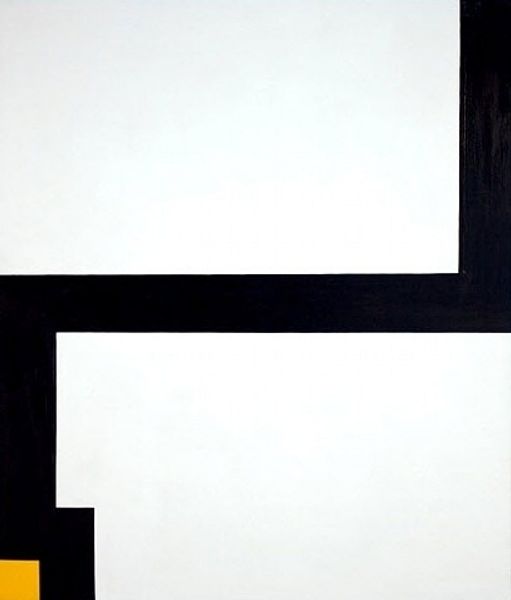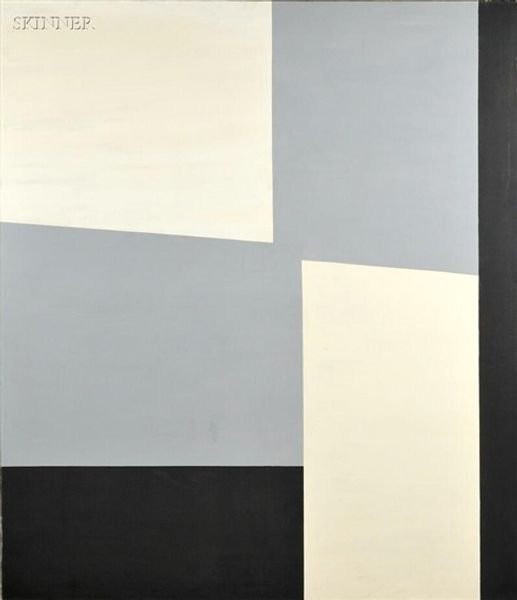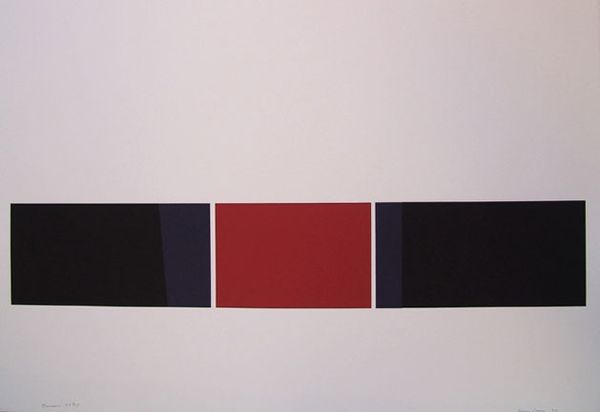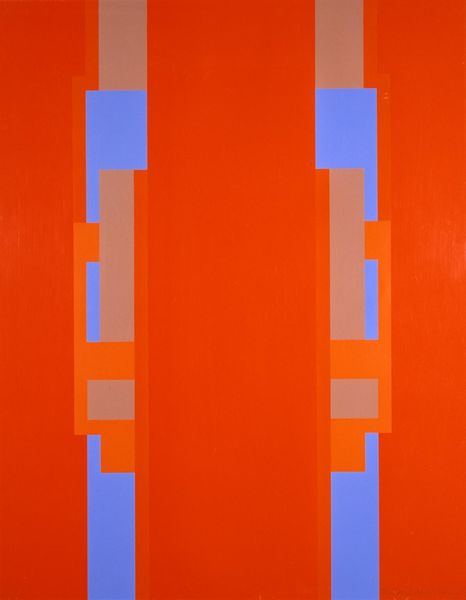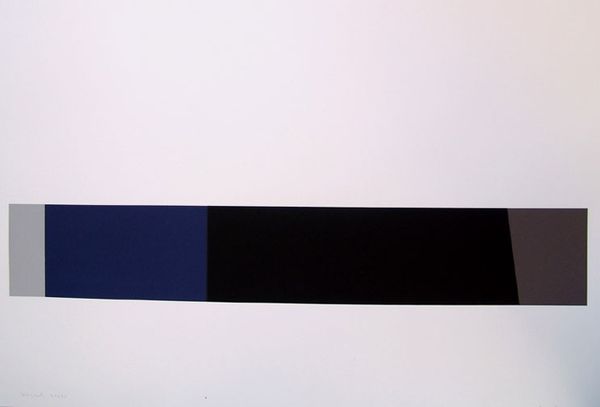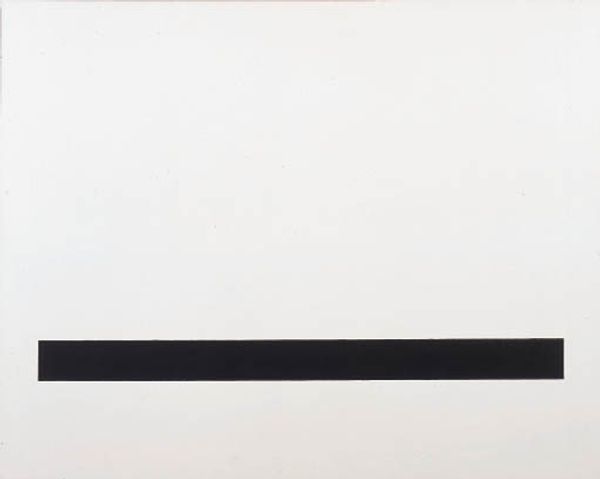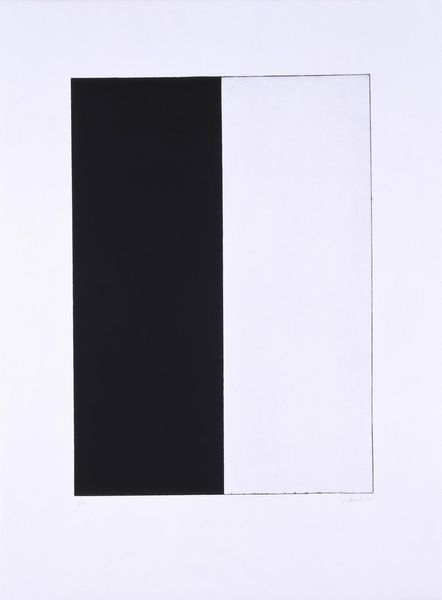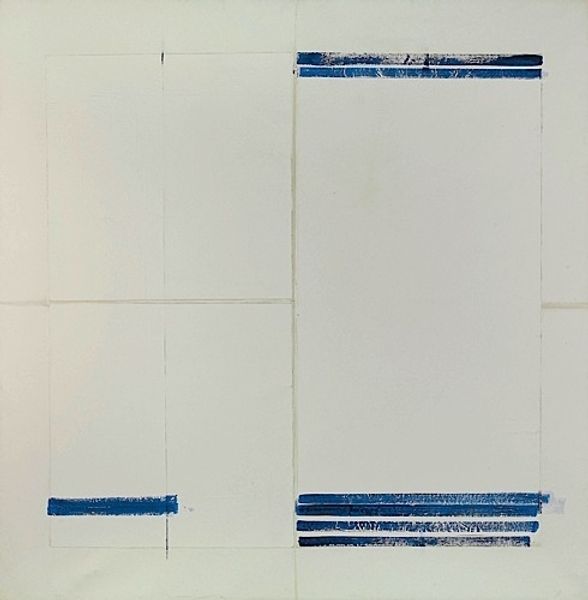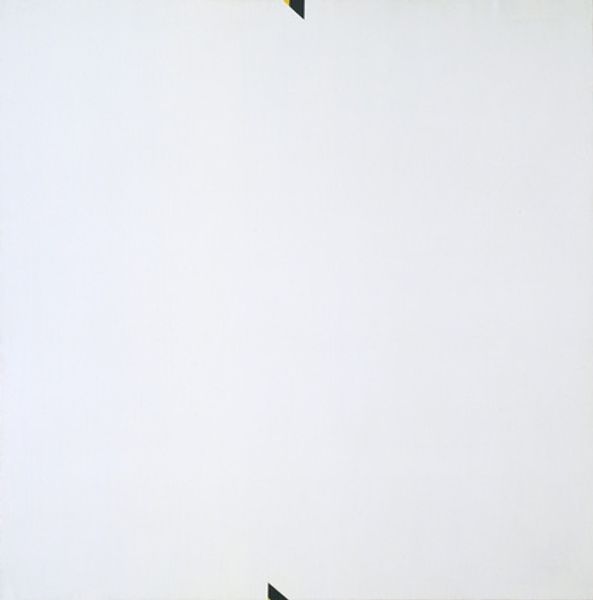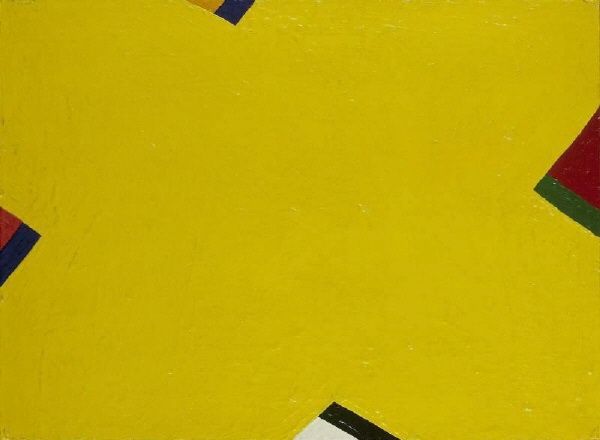
#
negative space
#
isolated focal point
#
repetition of white
#
bright focal point
#
rectangle
#
gestalt
#
white focal point
#
zen
#
pop art-influence
#
line
#
a lot negative space
#
remaining negative space
Copyright: John McLaughlin,Fair Use
Curator: At first glance, I find this composition to be incredibly calming. The interplay of the shapes and the balance within the image evoke a sense of peacefulness. Editor: Today we’re looking at John McLaughlin’s "Number 15," created in 1961. McLaughlin was a pioneer of hard-edge painting, which really emphasized clean lines and geometric forms. He often spoke of his work as aiming toward a kind of visual silence. Curator: "Visual silence" perfectly encapsulates my initial response! The restricted color palette, primarily black, white and this delicate sky-blue, helps to distill the image down to its essential elements. And it really enhances the negative space here too. Editor: Exactly. McLaughlin believed that simplicity in form could lead to a deeper contemplation. In a time when abstract expressionism was flourishing with its gestural marks and emphasis on the artist's emotion, McLaughlin chose a path of restraint. I wonder how audiences perceived this decision. Was it welcomed or met with opposition given prevailing trends? Curator: That's fascinating to consider, especially in the context of the Cold War and the burgeoning consumer culture of the early 60s. This aesthetic feels like a quiet rebellion against the noise and complexity of the modern world. But what do you make of the texture? The materiality? I find that the perfectly uniform fields of color limit what is visually interesting. Editor: Agreed, it’s hard to get a sense of the tactile from the image alone, but I think the key is to consider the composition—look at how the interplay between vertical and horizontal rectangles creates a sense of depth, even though it's entirely flat. Curator: Yes, the organization is definitely carefully orchestrated to trick the eye. Editor: This piece really highlights how art can invite a sort of contemplative experience. Even using basic geometric forms, McLaughlin gets viewers to stop, pause, and find quietude in the composition. Curator: Absolutely. And by considering the period in which it was made, we also reveal a work that acted against cultural trends of maximalism, bringing awareness to silence through pure geometric forms.
Comments
No comments
Be the first to comment and join the conversation on the ultimate creative platform.

